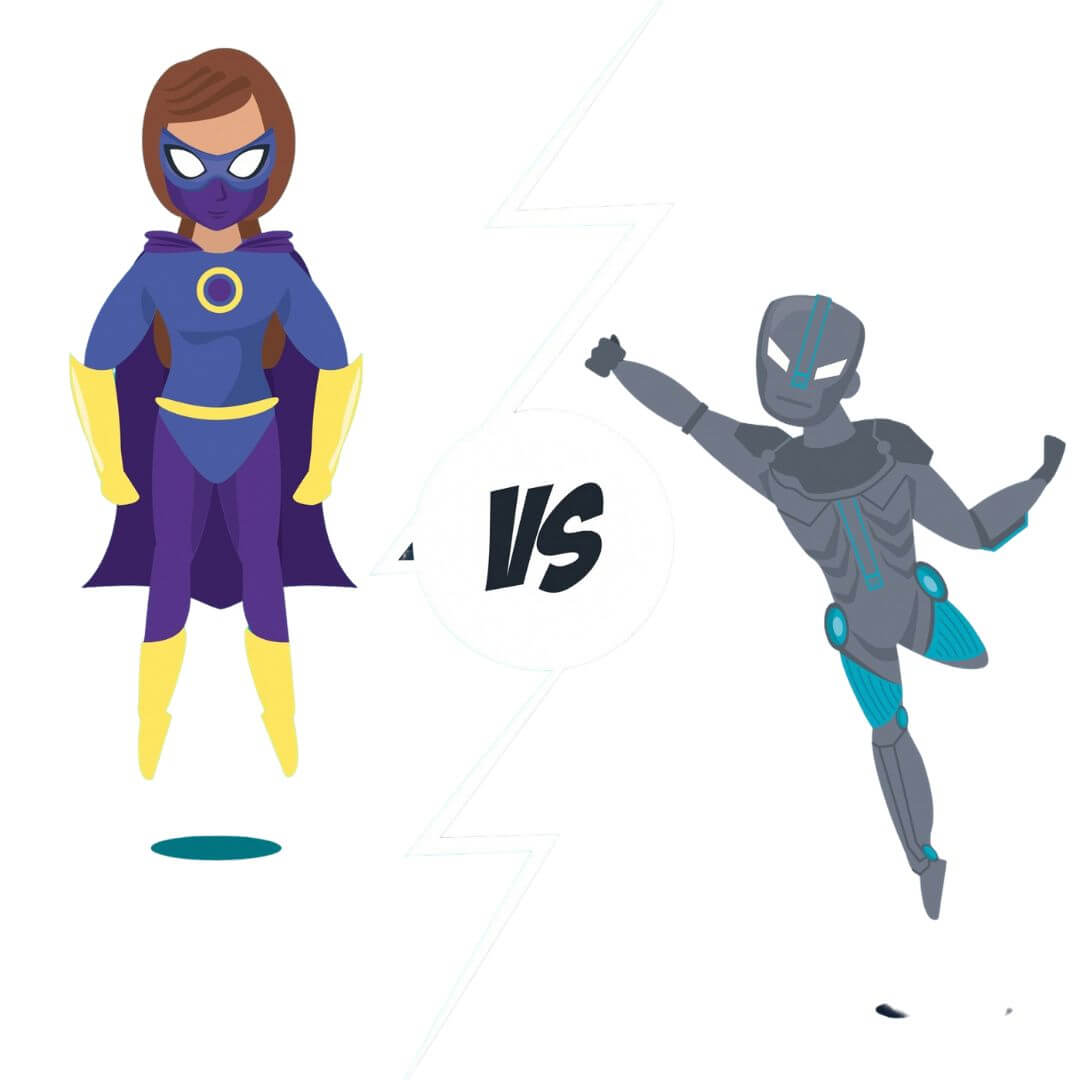Visual storytelling has become one of the most powerful tools in the digital marketing arsenal. In an age where attention spans are shorter, standing out requires more than just great products or services. Brands need to grab the attention of their audience within seconds, and visuals have proven to be the most effective way to do this. Two of the most popular and impactful ways to communicate visually are illustration and animation.
For businesses looking to connect with their audience memorably, choosing the right medium between illustration and animation can be a difficult decision. While both are great for creating engaging brand videos, they each offer unique advantages depending on your objectives, brand identity, and target audience. So, which one is better for your brand? Let’s dive deeper into illustration vs. animation, how each can impact your brand videos, and ultimately, how to make the right choice.
What is Illustration?
Before we jump into comparing illustration and animation, let’s understand the essence of each of these visual techniques. Illustration is a form of artwork created through drawing, painting, or digital design. These artworks can be anything from simple sketches to detailed, colourfull visuals. Illustration is a state; it doesn’t move or involve the addition of sound effects or motion. Instead, illustration uses still images to communicate ideas, concepts, and emotions.
Illustrations are often used in branding because they provide a visually appealing and unique way to represent a brand’s identity. From logos to advertisements, illustrations can help convey a story, capture attention, and evoke emotions without the need for motion.
The Power of Animation in Visual Storytelling
On the other hand, animation is a technique that takes visual storytelling to the next level by adding movement, sound, and sometimes even interactivity. Unlike illustration, which is still, animation involves a sequence of images (which could be hand-drawn, computer-generated, or 3D models) that create the illusion of motion. It can take many forms, including 2D animation, 3D animation, motion graphics, and stop-motion animation.
Animation is often used in brand videos to create engaging and dynamic experiences that captivate the audience. Whether it’s showing a process, narrating a brand story, or explaining a concept, animation adds depth and dimension, keeping the viewer engaged for longer.
Illustration vs. Animation: Which Works Best for Your Brand?
Now that we have a better understanding of illustration and animation, let’s explore their key differences and how each works best for different brand strategies. Both mediums have their advantages and understanding when to use each can help you maximize the impact of your brand videos.
1. Static vs. Dynamic
One of the most fundamental differences between illustration and animation is the level of movement. Illustration is static—it’s a single image that captures a moment, a feeling, or a concept. Its power lies in simplicity and clarity, using shapes, colours, and lines to communicate visually.
On the other hand, animation introduces motion into the equation. With the addition of movement, animation can bring a story to life. Whether it’s a simple logo animation or a full-length animated explainer video, movement captures attention and adds energy to the brand’s messaging. The dynamic nature of animation can engage viewers and keep them interested for a longer period.
For example, imagine trying to explain a complex process through illustration—it can be done effectively, but the animation will allow for a more seamless flow, showing how each part of the process interacts in real-time. Animation not only adds clarity but makes the process more engaging.
2. Simplicity vs. Complexity
Another key difference between illustration and animation is their level of complexity. Illustration is often more straightforward. It can deliver clear, concise messages without much distraction. A well-crafted illustration can evoke emotions, deliver a message, and create a strong visual identity. It is typically used when the goal is to convey a single idea or to reinforce a visual identity.
However, animation opens up a world of possibilities for adding complexity. With animation, you can show progression over time, reveal multi-dimensional concepts, and even simulate real-world physics (such as how products are made, how something functions, or how a character moves). This versatility gives animation the ability to create a more immersive and detailed experience for your audience.
In brand videos, illustration might work best for simple, visually appealing concepts such as logos, mascots, and iconography. But for more intricate stories, product demonstrations, or anything requiring motion, animation can help you bring it to life in a much more engaging way.
3. Target Audience Appeal
Understanding your target audience plays a crucial role in choosing between illustration and animation. Both mediums are effective, but depending on your audience’s preferences and expectations, one might resonate more than the other.
- Illustration is timeless. It appeals to a wide audience and can evoke feelings of nostalgia, sophistication, or minimalism, depending on the style. If your brand caters to an audience that appreciates simplicity, elegance, or artistic design, the illustration will likely be a great fit. Think of high-end brands, fashion labels, or companies that emphasize sustainability and eco-consciousness. For them, illustration provides a refined and clean aesthetic.
- Animation, on the other hand, tends to appeal more to younger, tech-savvy audiences who are looking for dynamic, engaging content. Animation is perfect for capturing attention, and it works well with audiences that expect more interactive or immersive experiences. For example, tech startups, gaming companies, and brands aiming for a younger demographic often prefer animation because it feels fresh, fun, and energetic.
4. Budget and Time Constraints
Creating content in both illustration and animation requires different levels of investment. Illustration is usually less time-consuming and more cost-effective than animation because it doesn’t involve movement, sound, or complex visual effects.
- Illustration typically takes less time to create. For example, designing a series of illustrations for a brand video might take a few days, depending on the complexity and style. The production cost for illustration is generally lower, making it an excellent choice for brands on a tight budget or with limited time.
- Animation, in contrast, is more resource-intensive. The process of creating a smooth, cohesive animation takes much longer. Each frame requires attention to detail, and adding effects, sound, and interactivity can increase both production time and cost. However, animation has the advantage of providing a more impactful, polished final product that can justify the investment for brands looking to make a significant impact in the market.
5. Longevity and Reusability
Illustration and animation also vary in terms of their longevity and how they can be reused. Illustrations tend to have longer lifespans, especially if they are part of your brand’s core identity. For instance, a brand’s logo, mascot, or icons may be used consistently across various media—social media posts, websites, packaging, etc.—without needing to change.
On the other hand, animation is typically used for specific marketing campaigns, explainer videos, or promotional content. Although highly effective, animations may not be as versatile as illustrations in terms of long-term reusability. However, animation can still have a lasting effect on your audience, especially if it becomes iconic or associated with a memorable campaign.
The Best of Both Worlds: Combining Illustration and Animation
Sometimes, the best solution is not choosing one over the other, but rather combining both illustration and animation for a more dynamic and visually interesting brand video.
For example, you could start with an illustrated scene—showing a logo, a product, or an idea—and then introduce motion with animation. This hybrid approach allows you to enjoy the simplicity and elegance of illustration while adding the engagement and interactivity that animation provides.
A great example of this is a motion graphics video where static illustrations are animated with effects like text motion, transitions, and character movement. This allows brands to communicate key messages clearly and compellingly, combining the best of both worlds.
Which One Works Best for Your Brand?
Ultimately, whether you choose illustration or animation depends on a number of factors. If your brand needs simplicity, elegance, or minimalism, illustration may be the best fit. If your brand is more dynamic, interactive, and needs to engage your audience with motion and sound, animation will likely resonate more.
Consider your brand identity, your target audience, and your marketing goals when deciding between illustration and animation. Both have their advantages and can be used effectively to enhance brand videos.


